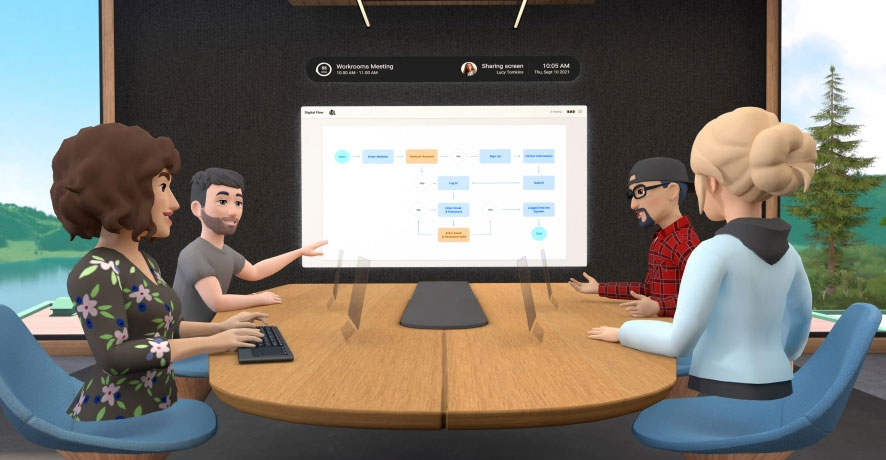Modern information platforms still grow in complexness to fulfill the dynamic wants of information customers. information analysts and information scientists demand quicker access to information, but IT, security and governance square measure stuck, unable to work out the way to offer access to the information in a very straightforward, secure, and standardized means across a good sort of analytic tools.
In fact, per Gartner, through 2022, solely twenty % of organizations investment in info governance can achieve scaling their digital businesses. As a result, organizations square measure coming up with information access frameworks that enable them to beat the information delivery challenge, maintain quantifiability, and guarantee universal information authorizations across all parties.
Why fashionable information Platforms square measure thus complicated
Organizations of all sizes still leverage information to raised perceive their customers, reach competitive advantage, and improve operational potency. to fulfill these wants, Associate in Nursing enterprise information platform capable of handling the complexness of managing and mistreatment the information is crucial.
One of the largest challenges facing information platform groups nowadays is the way to build information universally accessible from the wide selection of disparate storage systems (data lakes, information warehouses, relative databases, etc.) whereas meeting progressively complicated information governance and compliance needs because of rising privacy legislation like GDPR, CCPA, etc.
This complexness is exacerbated by the disconnect between information neutral groups: the technical information platform and information design teams; centralized information security and compliance; information scientists and analysts sitting within the lines of business chartered with generating insights; and information homeowners and stewards to blame for building new information merchandise.
Without correct information access Associate in Nursingd an authorization framework to assist change processes, the complexness of managing client information and in person recognisable info (PII) can considerably have an effect on productivity and limit the number of accessible information that may be used.
How To Establish Cloud-Based information Security and regulative Compliance
When information stakeholders aren’t in alignment, organizations become stuck on their information delivery journey. this is often as a result of information customers ought to be able to realize the proper dataset, perceive its context, trust its quality, and access it within the tool of their alternative — all whereas {the information|the info|the information} security and governance groups should be trustworthy to use the proper data authorization and governance policies.
Accelerating time-to-insight on information platforms needs a solid framework that not solely meets the requirements of all stakeholders, however additionally provides the flexibility to scale as systems expand.
When coming up with or architecting an answer to confirm accountable information use, it’s vital to develop a universal information authorization framework that features these six key capabilities:
1. Leverage Attribute-Based Access management (ABAC)
Most organizations begin making access management policies mistreatment role-based access management (RBAC). This approach is helpful for easy use cases, however since roles square measure manual and inherently static, each new use case needs the creation of a brand new role with new permissions granted thereto user.
As the information platform grows in scale and complexness, the result’s a painful policy setting referred to as “role explosion.” Also, every system has its own standards of shaping and managing permissions on roles, and RBAC is usually restricted to coarse-grained access (e.g. to a complete table or file).
Alternatively, ABAC permits organizations to outline dynamic information authorization policies by investment attributes from multiple systems so as to form a context-aware call on a person request for access.
ABAC, a superset of RBAC, is in a position to support the complexness of granular policy needs and expand information access to a lot of individuals and use cases via 3 main classes of attributes (user, resource and/or environmental) that may be accustomed outline policies.
2. Dynamically Enforce Access Policies
Most existing solutions for policy social control still need maintaining multiple copies of every dataset, and also the price of making and maintaining these will quickly add up. merely investment ABAC to outline policies doesn’t fully alleviate the pain, particularly once the attributes square measure evaluated against the access policy at the choice purpose. this is often as a result of they still purpose toward a static copy.
Once the hard to please job of shaping attributes and policies square measure completed, they ought to be pushed right down to the social control engine to dynamically filter and rework the information by redacting a column, or applying information transformations like anonymization, tokenization, masking, or perhaps advanced techniques like differential privacy.
Dynamic social control is essential to increasing the roughness of access policies while not increasing complexness within the overall system. It’s additionally key to making sure the organization remains heavily aware of dynamic governance needs.
3. Produce a Unified information Layer
If ABAC is that the engine required to drive ascendible, secure information access then information is that the engine’s fuel. It provides visibility into the what and wherever of the organization’s datasets and is needed to construct attribute-based access management policies. A richer layer of information additionally allows organizations to make a lot of granular and relevant access policies with it.
There square measure four key areas to think about once architecting the information lifecycle:
- Access: however will we have a tendency to alter seamless access via API, so as to leverage information for policy decisions?
- Unification: however will we have a tendency to produce a unified information layer?
- Metadata Drift: however can we make sure the information is up to date?
- Discovery: however will we have a tendency to discover new technical and business metadata?
The challenge is that information, similar to information, generally exists in multiple places within the enterprise and is in hand by totally different groups. every analytical engine needs its own technical metastore, whereas governance groups maintain the business context and classifications at intervals a business catalog like Collibra or Alation.
Therefore, organizations ought to federate and unify their information in order that the whole set is offered in real time for governance and access management policies. Inherently, this unification is finished via Associate in Nursing abstract layer since it might be unreasonable, and virtually not possible, to expect to own information outlined in a very single place.
Unifying information on an eternal basis establishes one supply of truth with relevancy information. This helps to avoid “metadata drift” or “schema drift” (aka inconsistency in information management) over time and allows effective information governance and business processes like information classification or tagging across the organization. It additionally establishes a unified information taxonomy, creating information discovery and access easier for information customers.
Metadata management tools that use computer science to change elements of the information lifecycle are useful as they will perform tasks like distinctive sensitive information varieties and applying the suitable information classification, automating information discovery and schema illation, and mechanically detection information drift.
4. Alter Distributed berth
Scaling secure information access isn’t simply a matter of scaling the categories of policies and social control strategies. the method of policy decision-making should even be able to scale as a result of the categories of information out there, and also the business needs required to leverage it, square measure thus various and sophisticated.
In the same means that the social control engine might be a bottleneck if not properly architected, the dearth of Associate in Nursing access model Associate in Nursingd user expertise that permits non-technical users to manage these policies can get within the means of an organization’s ability to scale access management.
Effective information access management ought to obtain to embrace the distinctive wants of all constituents, not hinder them. sadly, several access management tools need complicated amendment management and also the development of tailor-made processes and workflows to be effective. Enterprises ought to raise however this access model adapts to their organization timely.
To alter distributed berth the access system ought to support 2 key areas. initial delegate the management of information and access policies to individuals within the lines of business (data stewards and administrators) World Health Organization perceive the information or governance needs and replicating centralized governance standards across teams within the organization, and next make sure that amendment are often propagated systematically throughout the organization.
5. Guarantee straightforward Centralized Auditing
Knowing wherever sensitive information lives, World Health Organization is accessing it, and World Health Organization has permission to access it square measure important for enabling intelligent access selections.
This is as a result of piece of writing may be a consistent challenge for governance groups, since there’s no single normal across the variability of tools within the fashionable enterprise setting. Collating audit logs across numerous systems in order that governance groups will answer basic queries is painful and square measure unable to scale.
The governance team too, despite setting the policies at the highest level, has no thanks to simply perceive whether or not their policies square measure being implemented at the time {of information|of knowledge|of information} access and also the organization’s data is really being protected.
Centralized auditing with a regular schema is important for generating reports on however information is getting used and might alter automatic information breach alerts through one integration with the enterprise SIEM. Organizations are trying to solutions that audit log schema as they permit governance groups to answer audit queries, since several log management solutions square measure a lot of targeted on application logs.
Another thought is to take a position in a very basic visibility mechanism early within the information platform journey facilitate|to assist} information stewards and governance groups perceive information usage and help demonstrate the worth of the platform. Once the business is aware of what information it’s and the way individuals square measure mistreatment it, groups will style simpler access policies around it.
Lastly, explore for a versatile, API-driven design to confirm that the access management framework is future-proof and capable of adapting with the requirements of the information platform.
6. Future-Proof Integrations
Integrating with Associate in Nursing organization’s broader setting may be a key issue to any in access management approach, because the information platform can possible amendment over time as information sources and tools evolve. Likewise, the access management framework should be variable and support versatile integrations across the information cloth.
One advantage of mistreatment ABAC for access management is that attributes will return from existing systems at intervals the organization, as long as attributes are often retrieved in a very performant means so as to form dynamic policy selections.
Creating a versatile foundation additionally prevents the organization from having to work out the whole design from day one. Instead, they will begin with some key tools and use cases and add a lot of as they perceive however the organization uses information.
After all, policy insight may be a time and attention-grabbing insights sit at the overlap of key queries like what sensitive information can we have? World Health Organization is accessing and why? World Health Organization ought to have access?
Some organizations value more highly to specialize in open supply for this reason since they need the choice to customise integrations to fulfill their wants. However, a key thought is that building and maintaining these integrations will quickly become a full-time job.
In the ideal situation, the information platform team ought to stay lean and have low operational overhead. investment time into engineering and maintaining integrations is unlikely to supply differentiation to the organization, particularly with many high-quality integration tools exist within the scheme.
Success with Universal information Authorization
Like with any huge initiative, it’s vital to require a step back and leverage a design-to-value approach once attempting to secure information access. this suggests finding the very best price information domains that require access to sensitive information and enabling or unblocking them initial, similarly as attempting to ascertain visibility on however information is getting used nowadays so as to grade action.
Organizations square measure creating vital investments in their information platforms so as to unlock new innovation; but, information efforts can still be blocked at the walk while not Associate in Nursing underlying framework.
Scaling secure, universal information authorization are often an incredible enabler of lightsomeness at intervals the organization, however by investment the six principles higher than, organizations will make sure that they’re staying sooner than the curve and coming up with the proper underlying framework which will build all stakeholders in.
Article Code: BD767NBV





Top site ,.. amazaing post ! Just keep the work on !